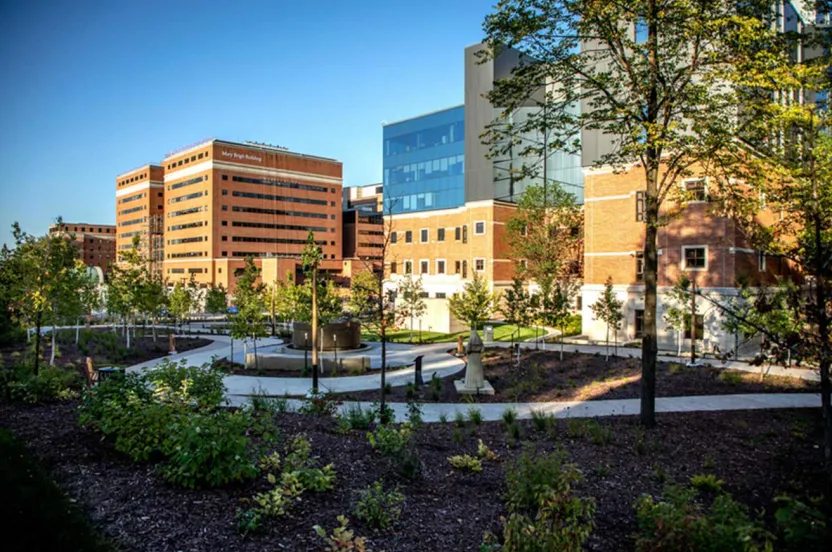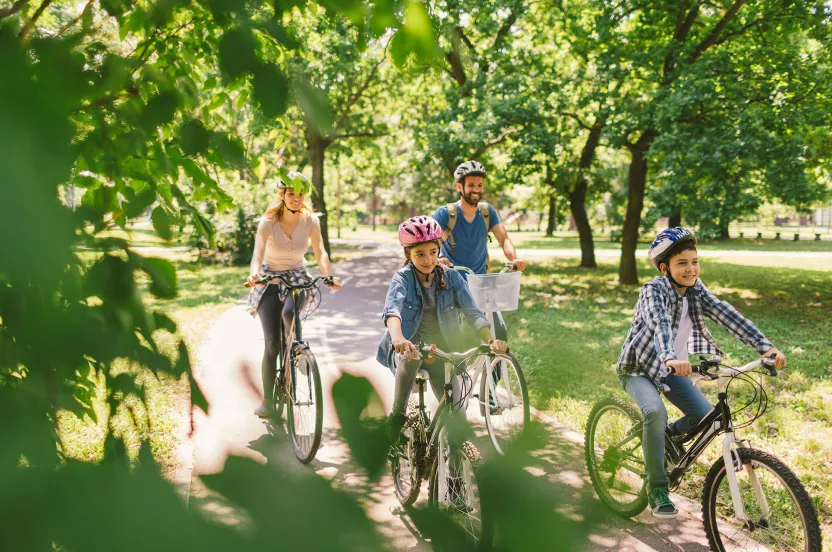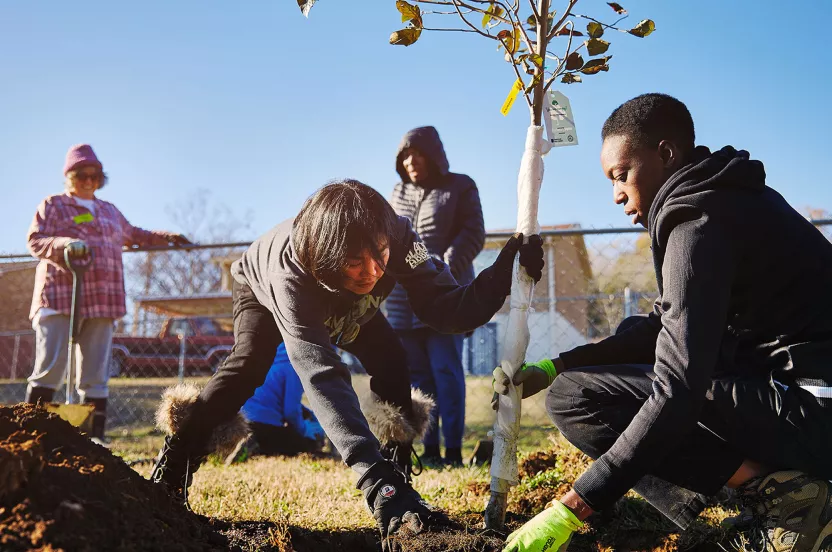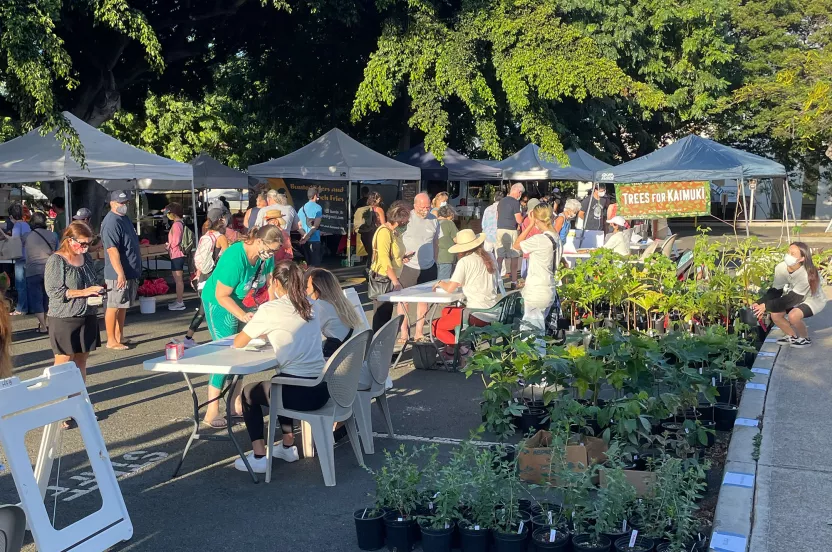Give before midnight on July 31 to double your impact where trees need us most. LEARN MORE
Planting a Cooler Future in Phoenix’s Villa Verde Neighborhood
How trees are helping shade a neighborhood hemmed in by concrete surfaces on all sides.
June 16, 2025
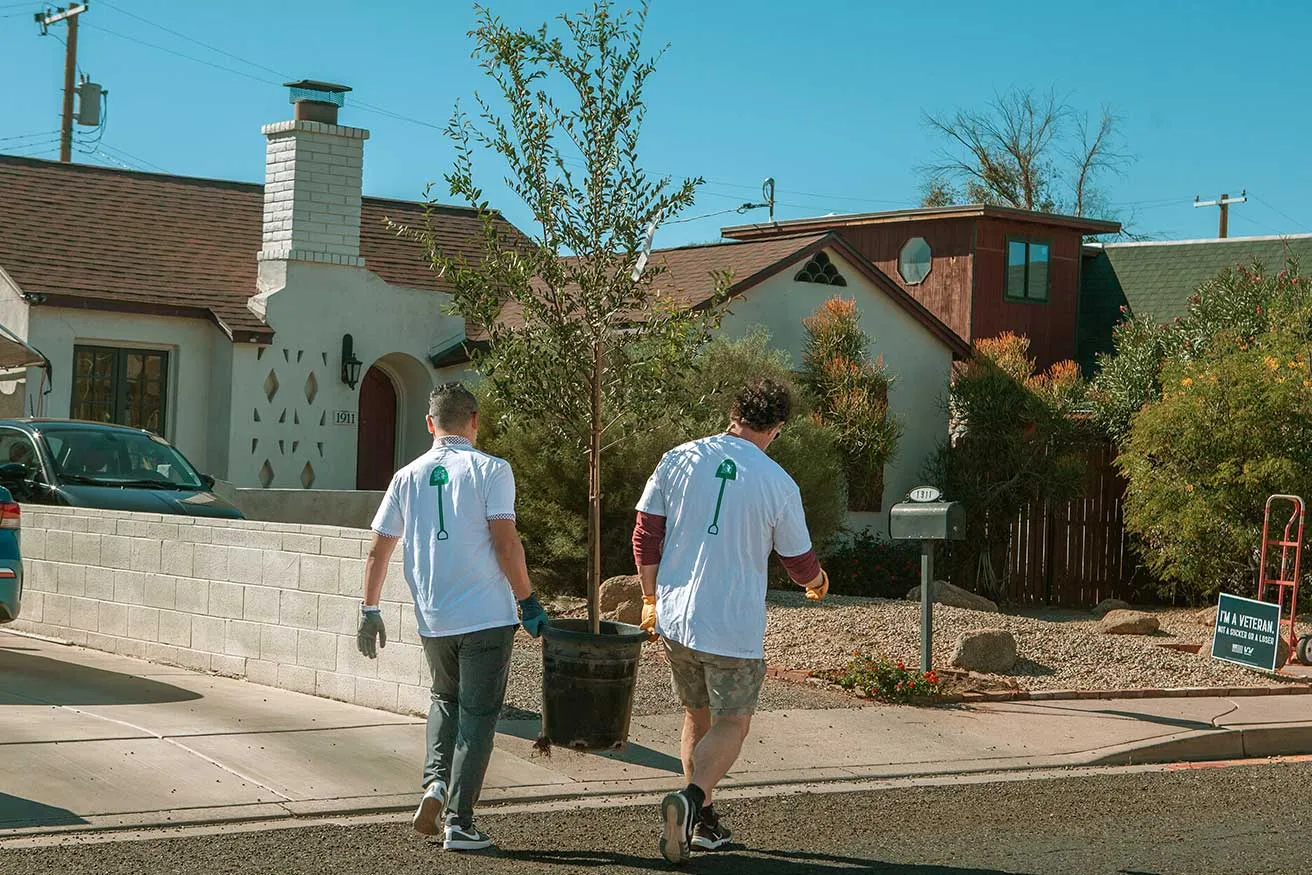
In the heart of Phoenix, where scorching pavement and industrial zones dominate the landscape, one neighborhood is taking a stand against rising temperatures.
The Villa Verde neighborhood, located near the State Fairgrounds and bordered by highways and industrial sites, has long faced the environmental challenges of extreme urban heat and poor air quality. With little natural shade, summer months become almost unbearable, and pollution from nearby traffic and industry lingers in the air.
But change is taking root. Trees Matter, a local nonprofit committed to increasing tree coverage in Phoenix, recently led a tree-planting effort in the neighborhood, working alongside dedicated volunteers and residents to plant more than 30 trees. These new trees will provide much-needed shade, improve air quality, and bring a sense of renewal to a community that has historically lacked green spaces.
A Neighborhood in Need
The unique challenges faced by Villa Verde made it a prime location for this project. Though located just outside downtown Phoenix, the neighborhood is surrounded by factors that amplify the effects of extreme heat. The State Fairgrounds, while a bustling attraction for part of the year, leaves behind vast, empty parking lots that radiate heat for months. Meanwhile, the presence of major highways and industrial facilities contributes to air pollution and limits opportunities for green infrastructure.
“This area is just surrounded by heat traps,” said Aimee Esposito, Executive Director of Trees Matter. “There are so many parking lots that sit unused most of the year, plus industrial buildings and freeways. It’s an area that really feels the effects of extreme heat and air pollution.”
The residents of Villa Verde are no strangers to these challenges. Many have lived in the neighborhood for decades and have seen firsthand how the lack of trees contributes to rising temperatures. With the region experiencing its hottest summer on record, the need for more shade and green spaces has never been more urgent.
Planting Trees, Planting Hope
The project was about more than just planting trees—it was about community. Homeowners were invited to sign up for trees, choosing species that would work best for their yards. Volunteers worked alongside them, digging holes, placing trees, and ensuring each one had the best possible start.
“Most residents were really eager to have trees, but many weren’t sure how to plant them properly,” said Ali Guttenberg, Trees Matter’s Planting Programs Manager. “That’s where we came in. We made sure every tree was planted in the right spot to maximize shade and energy savings, and we worked directly with homeowners to teach them how to care for their trees long-term.”
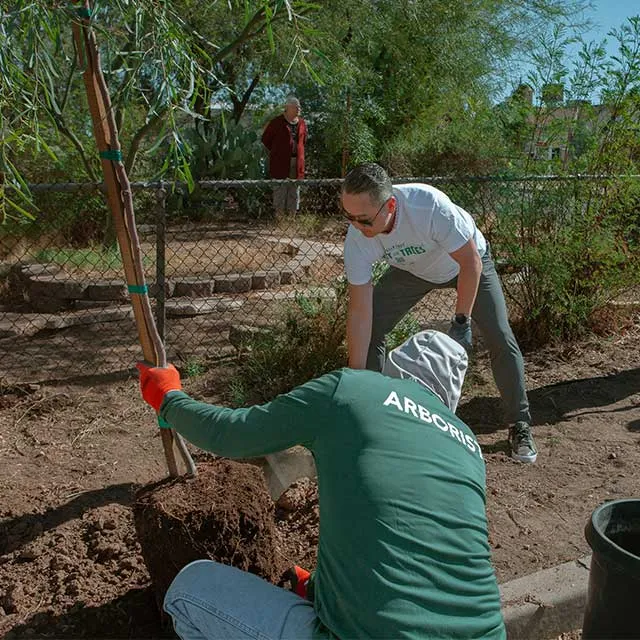
For some residents, this wasn’t the first time they had tried to bring more greenery to the neighborhood. In the past, individual tree drives had helped plant new trees, but extreme heat and drought had made it difficult for some to survive. This time, the Trees Matter team focused on not just planting but also ensuring long-term success. With educational materials in both English and Spanish, the organization provided residents with guidance on watering, pruning, and caring for their new trees.
One of the most enthusiastic participants in the project was Jorge Picos, a longtime resident and local business owner. “Jorge has been really involved in the neighborhood,” Esposito explained. “He’s been working to make this a better place for years, and he understands how much of a difference trees can make. He’s exactly the kind of community leader who can keep this momentum going.”
The Long-Term Impact
The benefits of these new trees will extend far beyond their first few years in the ground. As they mature, they will provide critical shade, cooling homes and streets in a city where concrete and asphalt trap the sun’s heat. This cooling effect will not only improve daily life for residents but also reduce energy costs by lowering the need for air conditioning.
Additionally, the trees will help combat the neighborhood’s persistent air pollution. Positioned near two major highways and industrial sites, Villa Verde experiences higher-than-average levels of pollution, which can contribute to respiratory issues and other health concerns. Trees act as natural air filters, capturing pollutants and improving overall air quality.
“This neighborhood has been dealing with the effects of pollution and heat for a long time,” said Esposito. “These trees are a step toward reversing some of that damage. They won’t fix everything overnight, but they’ll make a real difference over time.”
The project also highlighted the importance of continued investment in tree planting and maintenance. As Phoenix’s climate continues to warm, initiatives like this will be crucial in helping communities adapt. Trees are one of the simplest and most effective ways to combat the urban heat island effect, and ensuring that neighborhoods like Villa Verde have equitable access to green spaces is key to creating a more livable city.
A Greener, More Resilient Future
At the end of the day, this effort was about more than just trees—it was about people. It was about bringing neighbors together, creating a shared sense of purpose, and laying the foundation for a healthier, more sustainable future.
“What I love about this project is that it’s not just about planting trees and walking away,” said Guttenberg. “It’s about educating residents, building relationships, and making sure these trees are here for the long haul.”
For the residents of Villa Verde, the sight of newly planted trees lining their streets is a symbol of hope. These trees stand as a commitment to a cooler, greener, and healthier neighborhood—one where future generations will enjoy the shade, breathe cleaner air, and feel the lasting impact of a community that came together to make a change.
This project was just one step in a larger effort to make Phoenix a more resilient city. But in a neighborhood where the heat has long been relentless and the air heavy with pollution, 25 trees made all the difference.
